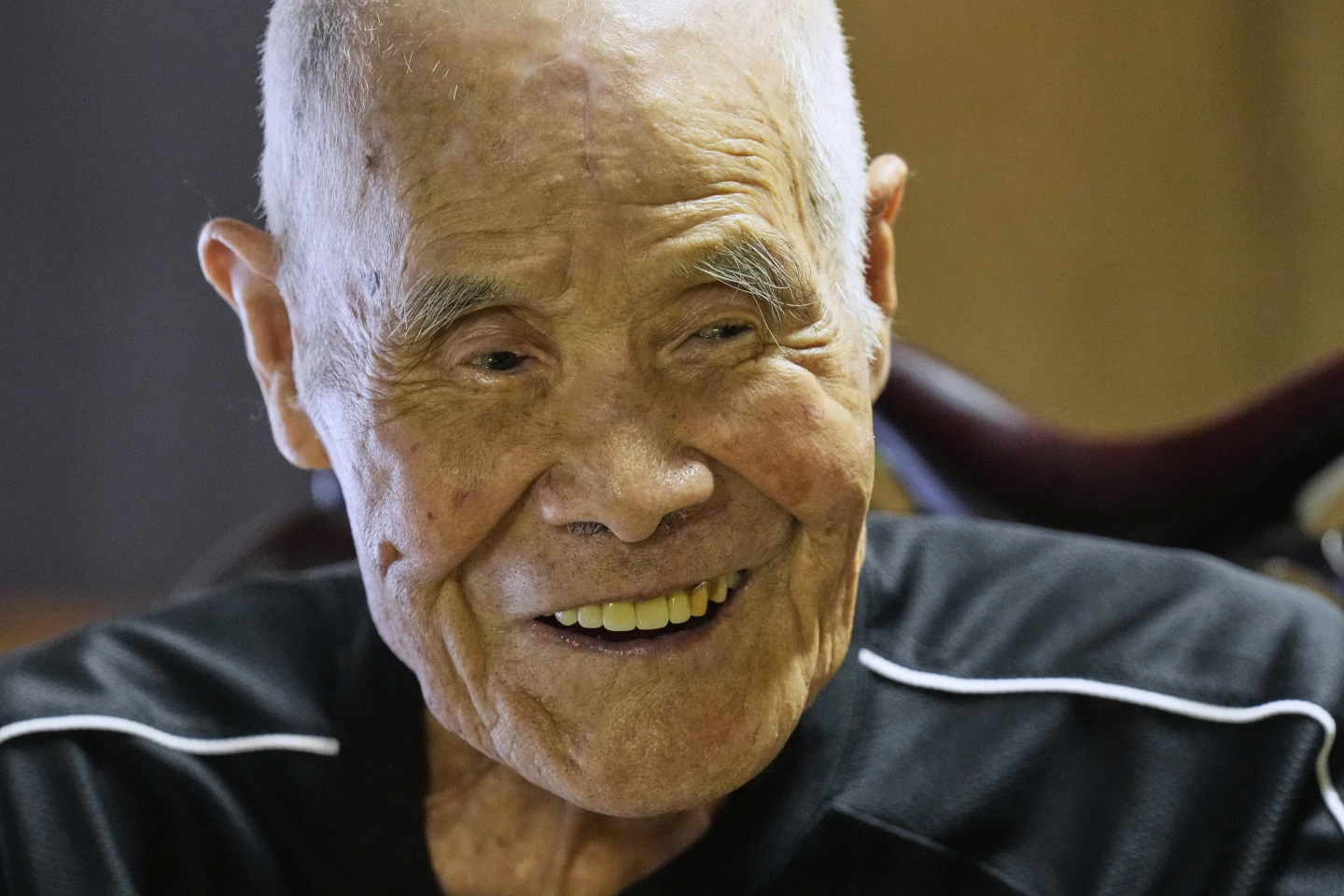At 102, Kokichi Akuzawa Conquers Mount Fuji Again: A Testament to Endurance, Passion, and Family Support
Introduction
In a world where age is often treated as a barrier, Kokichi Akuzawa has proven otherwise. At 102 years and 51 days old, the Japanese mountaineer once again reached the summit of Mount Fuji on August 5, 2025, reclaiming his record as the oldest person to do so. Having first earned the title at 96, Akuzawa’s latest feat is not simply about reclaiming a record but about resilience, joy, and the enduring bonds of family and community. His climb stands as a living testament to the power of passion, preparation, and perseverance.
A Life Shaped by Mountains
Born in 1923 in Nagano Prefecture, Akuzawa grew up surrounded by the natural landscapes that would inspire his lifelong love for the outdoors. His fascination with climbing began in youth, nurtured by the towering peaks of central Japan. Mountains, to him, were never just obstacles to overcome; they were places of discovery, reflection, and connection.
Beyond his climbing pursuits, Akuzawa lived a rich professional life. He worked as an engine design engineer and later in livestock artificial insemination, careers that demanded both precision and endurance. He continued to work until the age of 85, long past the retirement age of most of his peers, embodying a philosophy of lifelong purpose.
When he finally stepped away from formal work, he redirected his energies into painting and nature walks. These activities weren’t mere hobbies but outlets that reinforced his connection to beauty, creativity, and vitality. Life’s setbacks, including bouts of shingles, heart problems, and a serious fall, only deepened his resolve. Each obstacle became a story of recovery, proof that determination was stronger than frailty.
Preparing for the Impossible
Scaling Mount Fuji at 102 did not happen by chance. Akuzawa approached the challenge with discipline and strategy. In the months leading up to the climb, he rose daily at 5 a.m. to walk long distances and tackled smaller local mountains almost every week. These training sessions rebuilt his strength and reawakened the endurance required for a summit attempt.
The regimen was about more than physical fitness. It gave him mental confidence, reinforcing that the summit was achievable. For someone well into his second century of life, every step was both an exercise in conditioning and a reaffirmation of his will.
The Journey Up
On the morning of his climb, Akuzawa set out with his support team: his 70-year-old daughter, Motoe, his granddaughter, her husband, and close friends. Their chosen path was the Yoshida Trail, one of the most popular but demanding routes to the summit, featuring 4,922 feet of vertical gain.
The ascent was deliberately paced. Over three days, the group climbed steadily, spending two nights en route to ensure Akuzawa had time to rest and acclimate to the thinning air. On August 5, at 11 a.m., he placed his feet on the summit of Mount Fuji, once again looking out from Japan’s highest peak at 12,388 feet.
The climb was far from easy. As the group pushed toward the summit, temperatures dropped, oxygen thinned, and fatigue set in. Akuzawa admitted later, “I was really tempted to give up halfway through. But my friends encouraged me, and it turned out well.”
That encouragement, combined with his own inner resolve, was what carried him through. The summit, though extraordinary, was not only his victory but a collective triumph of family and friendship.
Fuji: More Than a Mountain
To understand the significance of Akuzawa’s climb, one must also understand Mount Fuji’s cultural weight. Rising gracefully from the Japanese landscape, Fuji is not only Japan’s tallest peak but also a sacred symbol of beauty, perseverance, and renewal. For centuries, it has drawn poets, painters, pilgrims, and climbers seeking inspiration.
In Japanese culture, climbing Fuji is often seen as a rite of passage, a physical and spiritual endeavor that connects individuals to nature and to something greater than themselves. For Akuzawa, who has spent a lifetime in dialogue with mountains, the climb was an act of communion with one of Japan’s most revered symbols.
A Record Rekindled
Having first set the Guinness World Record at 96, Akuzawa has now surpassed his own milestone at 102. In doing so, he has pushed the boundary of what human endurance at extreme age can achieve. His name will once again appear in record books, but for him, the true reward lies elsewhere.
“I climb because I enjoy it,” he told reporters afterward. For Akuzawa, climbing has always been about joy, not recognition. Fame and records may follow, but they are incidental to the experience itself.
Lessons from Japan’s Longevity
Akuzawa’s feat is not entirely an anomaly. Japan is home to some of the world’s longest-living people, with Okinawa often cited as a global “blue zone” where centenarians thrive. Diets rich in fish, vegetables, and fermented foods, combined with active lifestyles and strong social bonds, contribute to this remarkable longevity.
Central to this way of life is the Japanese concept of ikigai: a reason for being. For Akuzawa, climbing, painting, and connecting with others represent more than pastimes. They are his ikigai, the threads that give his life meaning and structure even into his second century.
His story underscores how purpose, activity, and community intertwine to extend not just lifespan, but health span– the years in which people remain vigorous, independent, and engaged.
Global Echoes: Aging Athletes Around the World
Akuzawa’s accomplishment resonates globally, joining a lineage of seniors who continue to defy age through extraordinary feats. In the United States, athletes like 103-year-old Julia Hawkins, who ran track events well past the century mark, and 100-year-old triathlete Fauja Singh, who completed marathons across continents, have become symbols of ageless determination.
Similarly, bodybuilders like Jim Arrington, competing well into his 80s, and masters swimmers setting world records in their 90s, prove that athleticism can endure long after youth fades. Together, these stories form a mosaic of human possibility, showing that aging does not have to mean retreat but can instead be an invitation to redefine limits.
Akuzawa’s climb belongs to this global narrative. It affirms that vitality is not bound by age, but by imagination, preparation, and resilience.
Reflections and Legacy
Climbing Mount Fuji at 102 may well be Akuzawa’s final major ascent, a possibility he himself has acknowledged. These days, he turns his energy toward smaller peaks and creative pursuits. From his home studio, he paints mountain landscapes and volunteers at a senior care center. His family encourages him to paint Fuji at sunrise which is a symbol of both accomplishment and peace.
More than the record, it is this spirit of humility and connection that defines his legacy. He often remarks that climbing is about people as much as peaks: “It’s easy to make friends on the mountain.”
In this, Akuzawa embodies a profound truth that life’s greatest achievements are not measured only in height or distance but in the relationships we nurture and the joy we cultivate.
Final Thoughts
Kokichi Akuzawa’s 2025 ascent of Mount Fuji is more than a story of age-defying strength. It is a narrative about endurance, purpose, and the timeless joy of doing what we love. His journey from a boy in Nagano gazing at mountains, to a centenarian standing atop Fuji, illuminates the boundless possibilities of the human spirit.
In the end, Akuzawa’s climb is not simply about breaking a record. It is about reminding us that while our years may shape us, they need not confine us. His footsteps on Fuji’s summit echo with a message both ancient and urgent: that passion can outlast time, that age is not a wall but a horizon, and that the human spirit remains timeless.

